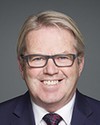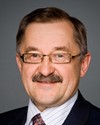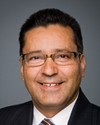There is a variety of issues. For the most part there is an excess of immigrants with credentials in most health professions relative to the number of spots available in provincially funded professions. In professions like dentistry, where it's more in the private sector, it's a slightly different issue.
Credential recognition is an issue. It's a manageable issue in the long run, but it's much more complicated. Don't forget that in almost every single health profession—nursing being a notable exception—the percentage of immigrants working is higher than the percentage of immigrants in the adult population.
In Canada, the percentage of immigrants in the population between the prime working ages of 25 and 64 is roughly 23% or 24%, and 33% of physicians are immigrants, and 29% of pharmacists are immigrants. I may be off by 1%, but it's more or less that. If you look at optometrists it's a similar thing. That applies to every group except nurses, which are close to the national average. So in almost every single regulated health profession, the percentage of immigrants is well above the national average.
There is a credential recognition issue for some people, but it hasn't stopped a very substantial number of immigrants from entering regulated health professions.



